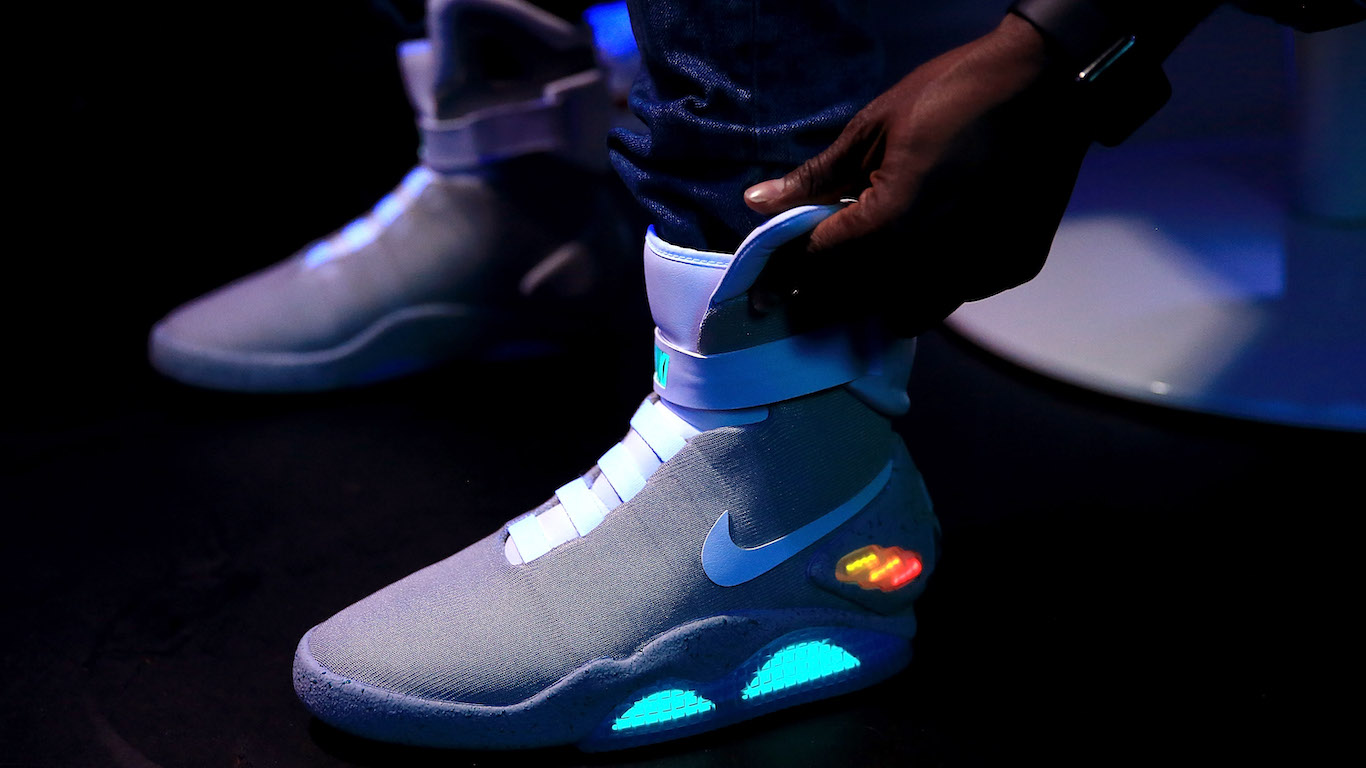 There was never any chance that in America income would be distributed like it was supposedly done in the Soviet Union – to each according to his ability and his needs. If capitalism is the key to the rise of the US economy, then the concept that some people can be richer than others is near the heart of the system. Americans worship self-made billionaires such as Bill Gates and Warren Buffett because they believe that it’s possible for them to be that wealthy too.
There was never any chance that in America income would be distributed like it was supposedly done in the Soviet Union – to each according to his ability and his needs. If capitalism is the key to the rise of the US economy, then the concept that some people can be richer than others is near the heart of the system. Americans worship self-made billionaires such as Bill Gates and Warren Buffett because they believe that it’s possible for them to be that wealthy too.
Read The Ten States With The Worst Income Inequality
Unfortunately, there are far more poor people than wealthy ones. America is the world’s most visible case of that. A small number of people in the US control most of the income, wealth, and property. More than one in eight people live below the poverty level and that number has grown recently. No matter what the government has done to bridge the difference between the groups, it has been ineffective, and that situation is not likely to change given the current tax laws. The wealthy have a higher tax rate, but even what they keep after taxes is far in excess of what most other Americans have.
24/7 Wall St. looked at the wealth gap by state to find those where the gulf between the rich and poor is the greatest. The formula used to reach this conclusion is a mathematical one called the Gini coefficient. It is a complex calculation which has on the one end of its measurement a world in which everyone makes exactly the same amount of money and on the other a collection of people where the gulf between the haves and have nots is high. The Marxian ideal is a “zero,” and a state in which one group possesses all the wealth and another has none would be “one.” The state in which the inequality is greatest in America, New York, is 0.5. Global statistics show that in come countries, the figure is as high as 0.7.
24/7 Wall St. took the 50 states and measured them according to the percentage of people below the poverty line and the percentage of people who earn more than $200,000. For comparison purposes, we also examined the median household income of each state as of 2009. The $200,000+ level is the highest wealth division of income considered by the Census. Only 3.8% of all households have incomes of $200,000 or more a year, which by itself shows how much wealth is distributed at the higher end of the income scale.
The history of US income inequality, as the Census tracks it, began in 1967. The Gini coefficient was 0.397 then. It was 0.468 in 2009. America’s income divide is becoming greater.
There are a nearly endless list of reasons for the number of low-income people have increase. The Census gives the most concise explanation.
“Researchers believe that changes in the labor market and, to a certain extent, household composition affected the long-run increase in income inequality. The wage distribution has become considerably more unequal with workers at the top experiencing real wage gains and those at the bottom real wage losses. These changes reflect relative shifts in demand for labor differentiated on the basis of education and skill. At the same time, long-run changes in society’s living arrangements have taken place also tending to exacerbate household income differences. For example, divorces, marital separations, births out-of-wedlock, and the increasing age at first marriage have led to a shift away from married-couple households to single-parent families and nonfamily households. Since nonmarried-couple households tend to have lower income and income that are less equally distributed than other types of households (partly because of the likelihood of fewer earners in them), changes in household composition have been associated with growing income inequality.”
These are the 10 states with the greatest income inequality.
10. Massachusetts
> Gini Coefficient: 0.468
> Median Income: $59,373 (8th Highest)
> Households Earning $200,000+: 6.56% (4th Highest)
> Population Living Below Poverty Line: 10.30% (7th Lowest)
Massachusetts has the fourth-greatest percentage of wealthy residents among all the states and the seventh-lowest percentage of people living below the poverty line. However, according to The Massachusetts Budget and Policy Center, “incomes for the highest income families in Massachusetts have grown almost five times as fast as those for low-income families and nearly twice as fast as those for middle-income families,” over the past two decades. According to the organization, the inequality gap has increased more during this time in Massachusetts than in 47 of the other states.
9. Illinois
> Gini Coefficient: 0.469
> Median Income: $52,870 (14th Highest)
> Households Earning $200,000+: 4.47% (10th Highest)
> Population Living Below Poverty Line: 13.30% (24th Lowest)
Illinois has a relatively large percentage of households earning $200,000 or more each year, 4.47% – the tenth greatest amount in the country. The state has the 24th smallest percentage of residents living below the poverty line, in comparison, with 13.3%. This may be due to the state’s policies which may be seen as giving preference to the wealthy. This year the state increased its flat income tax from 3% to 5%. According to John Tillman, chief executive of the Illinois Policy Institute, quoted in the State-Journal Register, the tax increase is “especially going to hurt lower-income folks — those who are just starting out in careers or are struggling for whatever reason, who have incomes in the $20,000-$40,000 range.” Worst still, average personal income has decreased 3.2% for the bottom 60% of Illinois wage earners over the past 40 years, according to the Center for Tax and Budget Accountability.
8. Georgia
> Gini Coefficient: 0.469
> Median Income: $43,340 (10th Lowest)
> Households Earning $200,000+: 3.43% (19th Highest)
> Population Living Below Poverty Line: 16.50% (12th Highest)
According to the non-profit research organization Institute on Taxation and Economic Policy (ITEP), Georgia’s tax system is regressive. This means that low-income families pay more of their income in state and local taxes than upper-income families do. The poorest 20% of Georgians have 3.2% of statewide personal income before taxes, but their share of after-tax income is just 3.1%. The best-off 1% of residents enjoys 16.7% of pretax Georgia income, and 17.2% of after-tax income. More than 20% of Georgians are living below the poverty line.
7. Florida
> Gini Coefficient: 0.469
> Median Income: $45,631 (15th Lowest)
> Households Earning $200,000+: 3.08% (20th Highest)
> Population Living Below Poverty Line: 14.90% (18th Highest)
Although Florida has only the 18th-largest percentage of its population living in poverty in the country, that share is growing quickly. From 2007 to 2009, the poverty rate increased from 12.1% to 14.9%, a growth of 550,000 people. In comparison, the national rate increased from 12.5% to 14.3% over the same period. Additionally, almost 1.2 million of the 2.7 million impoverished Florida residents live in “deep poverty,” defined by the US Census Bureau as households with incomes of 50% or less of the federal poverty level. That amounts to $5,478 a year for an individual. Recent tax breaks have been aimed at the wealthy, however. In 2007, both the state’s annual intangibles tax and the estate tax were eliminated. “Florida is a low tax state, but not for those living in poverty,” reports the Institute on Taxation and Economic Policy.
6. Mississippi
> Gini Coefficient: 0.470
> Median Income: $35,078 (Lowest)
> Households Earning $200,000+: 1.54% (Lowest)
> Population Living Below Poverty Line: 21.90% (Highest)
Mississippi has the greatest percentage of poor people in the nation, 21.9%. The state has the greatest percentage of households making below $30,000 a year, 42.53%, and the smallest percentage of households making $200,000 or more, 1.54%. Suffice it to say, poverty is a major issue in Mississippi and it is getting worse. From 2007 to 2009, the state’s poverty rate increased from 20.6% to 21.9%.
5. Alabama
> Gini Coefficient: 0.471
> Median Income: $39,980 (3rd Lowest)
> Households Earning $200,000+: 2.13% (9th Lowest)
> Population Living Below Poverty Line: 17.50% (6th Highest)
Alabama has the 5th largest percentage of households making less than $30,000 a year, and the tenth-highest percentage of households making above $100,000 a year. It also has the sixth-highest percentage of people living below the poverty line: 17.5%. From 2008 to 2009, the number of households making $200,000 or more a year fell from 2.3% to 2.1%. The number of households receiving food stamps, however, increased 26% from 2008 to 2009. “We’re seeing record numbers on food stamps and insurance programs, and there really is a direct correlation,” said Jim Carnes, spokesman for the anti-poverty advocacy group Alabama Arise, in The Birmingham News. “As the poverty rate increases, government services have a greater demand.”
4. Louisiana
> Gini Coefficient: 0.473
> Median Income: $45,433 (14th Lowest)
> Households Earning $200,000+: 2.54% (24th Lowest)
> Population Living Below Poverty Line: 17.30% (7th Highest)
Louisiana has the seventh-largest percentage of residents both making less than $30,000 a year and living below the poverty line. The bottom 25% of earners make only 4% of the state’s income. In comparison, the top 25% of earners enjoy 63% of the income, according to the Louisiana state government. The top 5% make 29% of the income. The good news is that personal income rose 3.1% in Louisiana in 2010, according to the US Bureau of Economic Analysis. This is slightly more than the national average of 3%, and raises Louisiana earnings above 2008 pre-recession levels.
3. Texas
> Gini Coefficient: 0.474
> Median Income: $47,475 (22nd Lowest)
> Households Earning $200,000+: 3.83% (16th Highest)
> Population Living Below Poverty Line: 17.20% (8th Highest)
Texas has the largest percentage of its population falling either below the poverty line or making more than $200,000 a year, relative to the other states. Just over 21% of the state’s population falls into one of these two camps, although most fall into the former group. According to an article from the St. Petersburg Times’ PolitiFact.com, Texas had a GINI index of 0.37 in 1970, which increased to 0.42 in 1990, and is now 0.474, implying increasing long-term income inequality.
2. Connecticut
> Gini Coefficient: 0.480
> Median Income: $63,851 (Highest)
> Households Earning $200,000+: 7.87% (Highest)
> Population Living Below Poverty Line: 9.40% (4th Lowest)
Connecticut is one of the wealthiest states in the country, with the greatest percentage of households earning $200,000 or more a year (7.87%). The disparity between the poor and wealthy is getting worse. According to a 2008 study from the Economic Policy Institute and the Center on Budget and Policy Priorities, income in Connecticut increased by $52,439, or 45%, to $169,378 for the top fifth of Connecticut households, while the bottom fifth’s income decreased $4,437, or 17%, to $21,133, from 1989 to 2006. The state has made efforts to begin correcting this issue by increasing the top income tax rate from 4.5% to 6.5%.
1. New York
> Gini Coefficient: 0.502
> Median Income: $50,216 (22nd Highest)
> Households Earning $200,000+: 6.15% (5th Highest)
> Population Living Below Poverty Line: 14.20% (25th Highest)
New York is a relatively wealthy state. It has the fifth-largest percentage of households earning $200,000 or more a year and has the 25th fewest people living below the poverty line. Regardless, the state has the most severe income inequality among all the states. According to the Fiscal Policy Institute, the top 1% of earners in New York State make about 35% of the state’s total income. This is up from 17% in 1990. The bottom 50% of earners, in comparison, make just 9.1% of total income, down from 13.9% in 1990. Inequality is even worse in New York City. According to the FPI report, “if New York City were a nation, it would rank 15th worst among 134 countries with respect to income concentration, between Chile and Honduras. Wall Street, with its stratospheric profits and bonuses, sits within 15 miles of the Bronx,” one of the nation’s poorest counties.
Douglas A. McIntyre & Charles B. Stockdale
Get Ready To Retire (Sponsored)
Start by taking a quick retirement quiz from SmartAsset that will match you with up to 3 financial advisors that serve your area and beyond in 5 minutes, or less.
Each advisor has been vetted by SmartAsset and is held to a fiduciary standard to act in your best interests.
Here’s how it works:
1. Answer SmartAsset advisor match quiz
2. Review your pre-screened matches at your leisure. Check out the advisors’ profiles.
3. Speak with advisors at no cost to you. Have an introductory call on the phone or introduction in person and choose whom to work with in the future
Get started right here.
Thank you for reading! Have some feedback for us?
Contact the 24/7 Wall St. editorial team.



